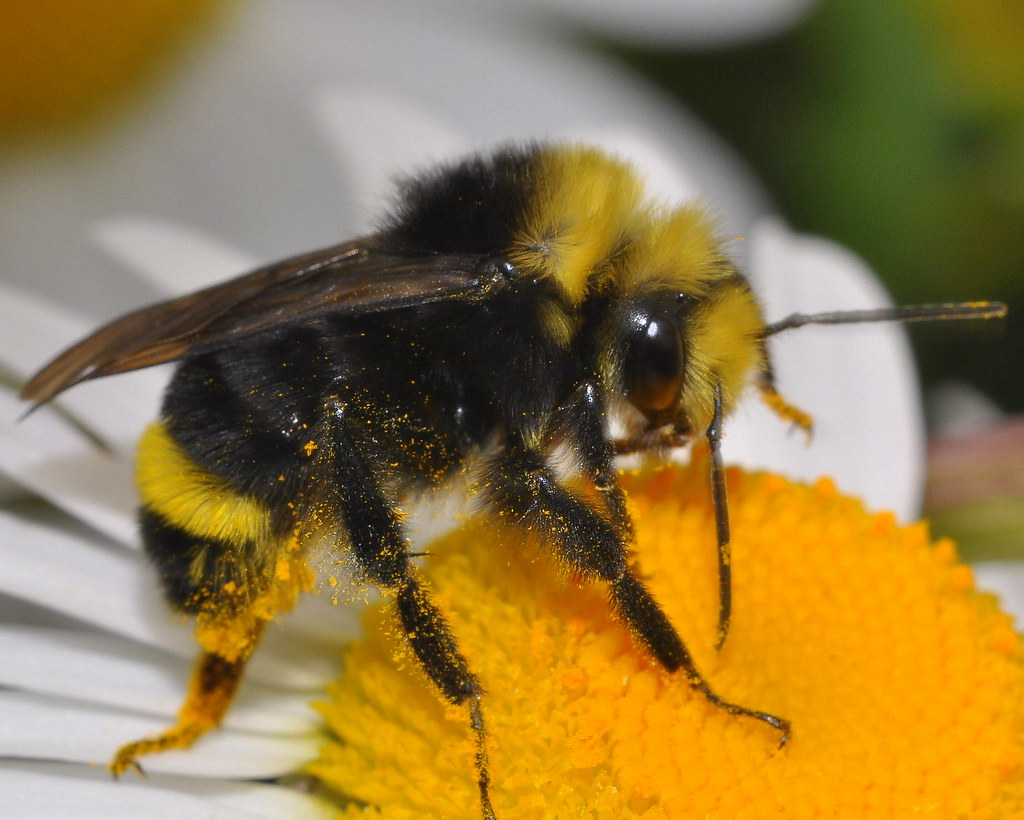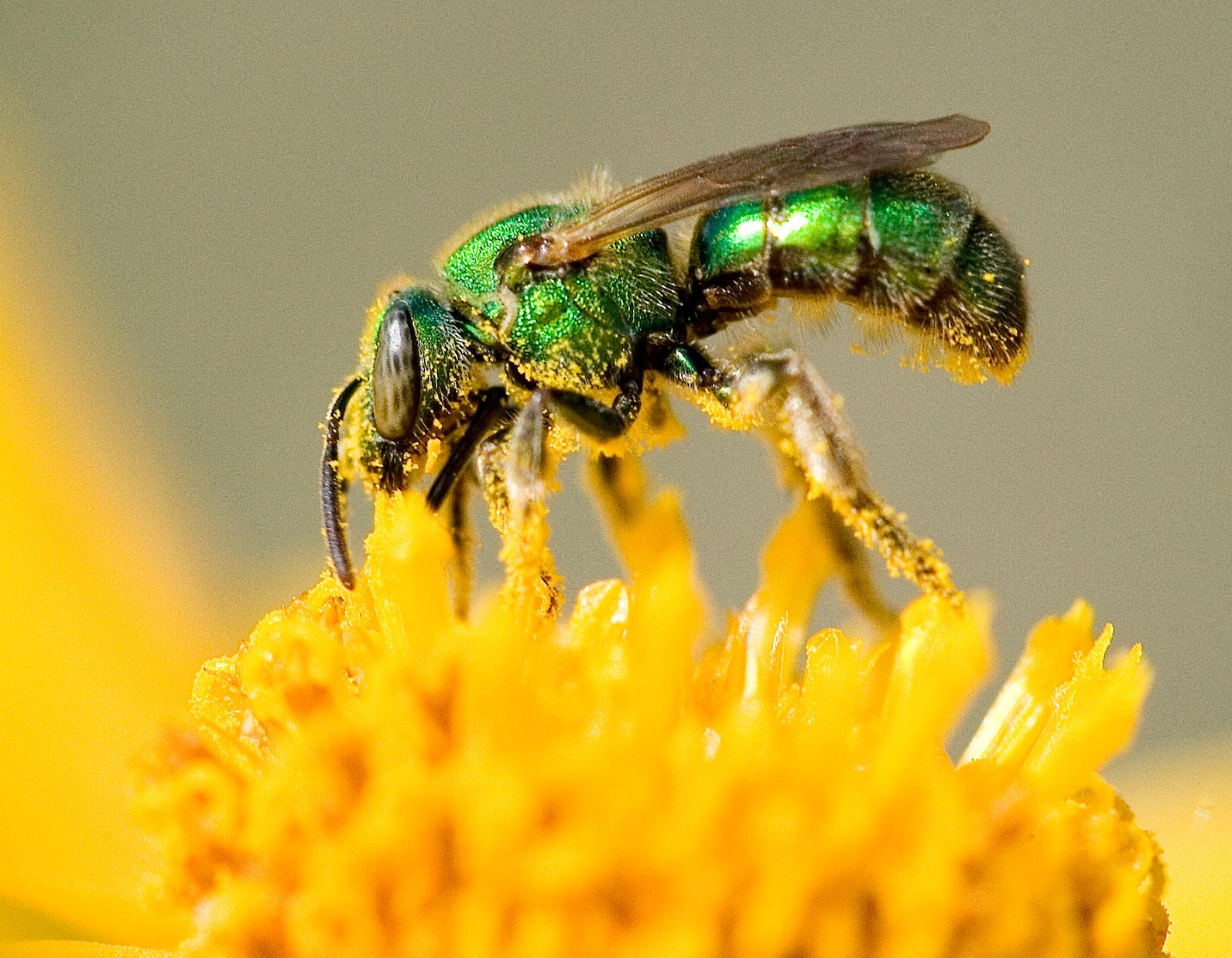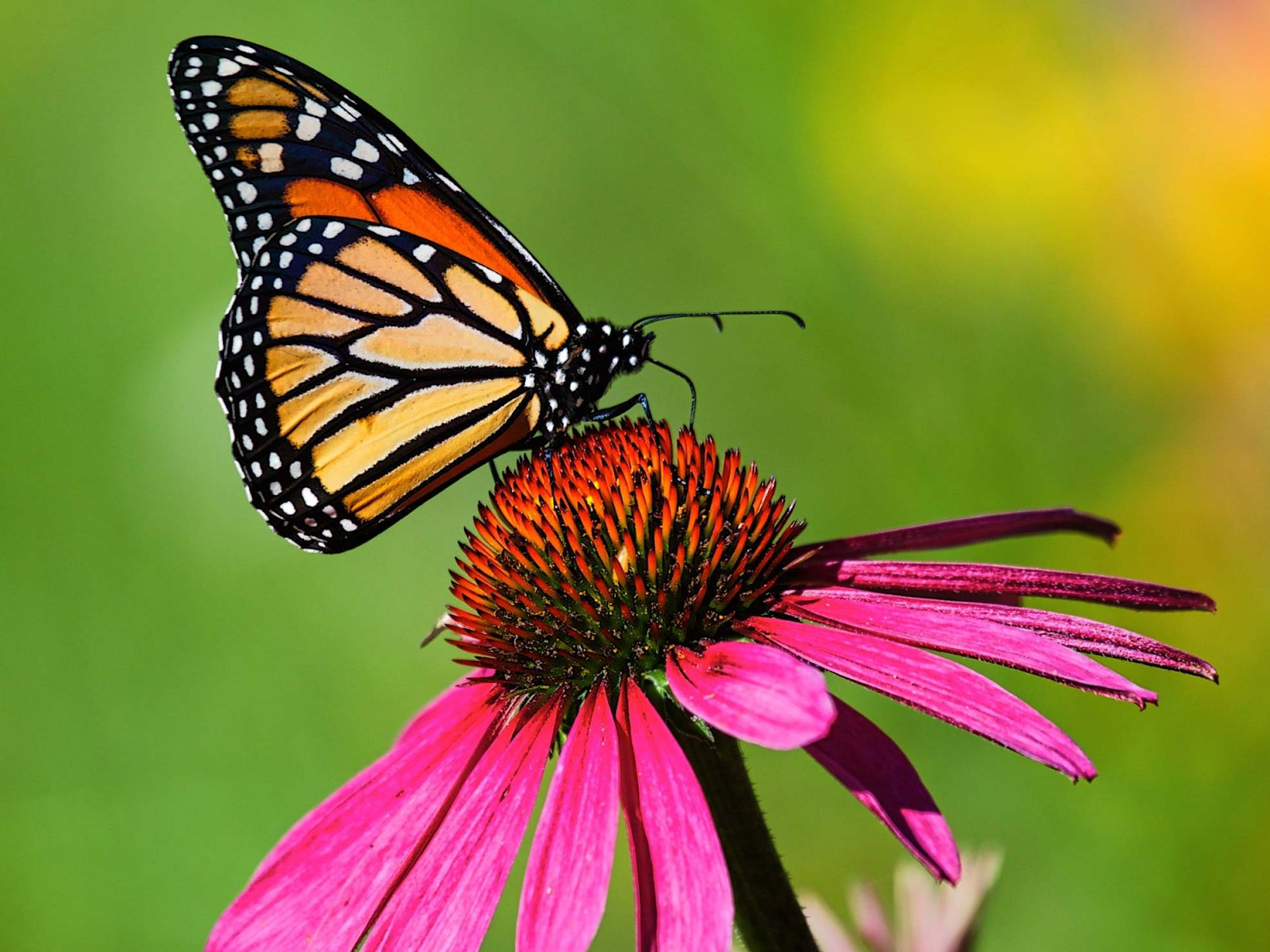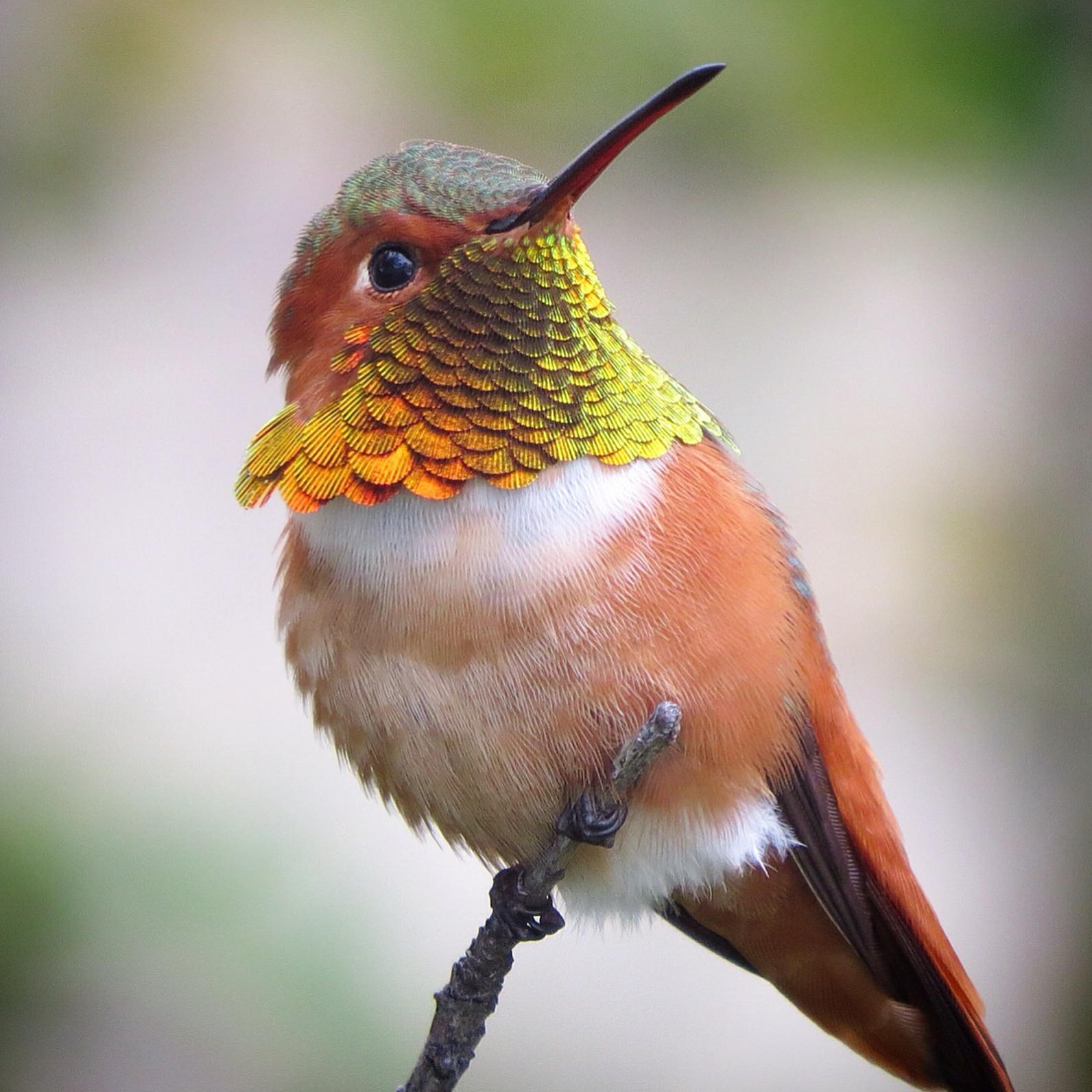What’s a Bee’s Purpose?
While you may run from bees or admire their humble presence, it’s important for everyone to know the roles that they serve for humans and nature alike. Bees are necessary to transfer pollen, indicate environmental health, increase natural biodiversity, and serve as a food source for other species. Pollination is when a creature, like a bee, transfers pollen from the male to the female parts of a flower, from the anthers to the stigmas.¹ Pollination is crucial to the wellbeing of natural, ornamental, and functional landscapes,² yet it also benefits humans through bee products such as honey, beeswax, and royal jelly.³ Since bees surround us and are crucial to nature as we know it, humans should learn the differences between species and how to protect their habitat.
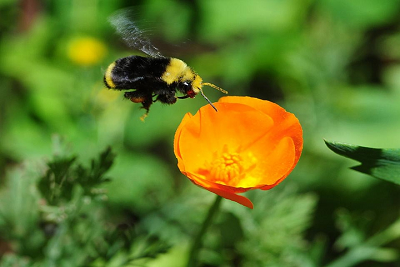 |
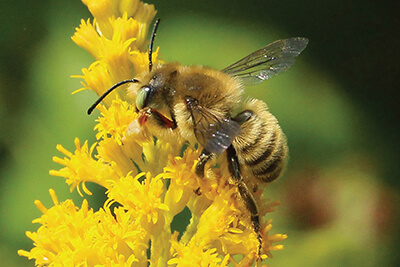 |
Taking a Closer Look
The most commonly pictured species of bees are European honey bees, which are social, live in hives, and work together to create honey. European and Africanized honey bees are known to be social but can also be aggressive, so watch out! However, there are also 1600 species of native bees in Northern California that are solitary and live in the woods, underground tunnels, or in your garden. While they don’t produce honey, the hard-working females mate, make nests, lay eggs, and collect pollen for their young. The males live to mate and may occasionally pollinate a flower. Some native bees don’t even have a stinger!²
Native bees range greatly in size and color, from tiny sweat bees that measure less than a quarter-inch to Valley Carpenter bees which can be over an inch long! They differ in color, shape, size, and even distribution of hairs on the body. While some physical attributes may take a magnifying glass to see, native bees all appear in different seasons, prefer different flowers, and display various habits.
Native bees are equally important as European honey bees, as they used to be the sole pollinators before nonnative species were introduced. In fact, native bees pollinate 80% of flowering plants worldwide!⁴ Native plants and creatures have mutually adapted over millennia, causing landscapes to be dependent on these species. Unfortunately nature isn’t always tuned into non-native species, shown by colony collapse disorder. This disorder, which is primarily having no to low numbers of adult honeybees in a hive, only affects European honey bees.⁵ All bees pollinate and are crucial to protecting the biodiversity of wildlife, making it essential to protect all species of bees.
The importance of wild pollinators has been proven by a study published by Science Magazine, “Overall, wild insects pollinated crops more effectively; an increase in wild insect visitation enhanced fruit set by twice as much as an equivalent increase in honey bee visitation.” ⁶ In essence, native pollinators are essential for pollinating and increasing honey bee populations.
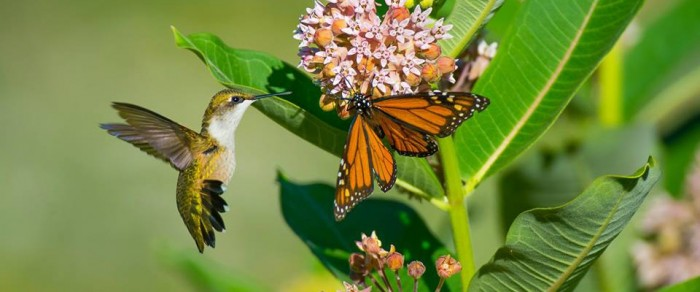
Bigger than Bees
The majority of plants rely on pollinators to create flowers or seeds, which in turn produces more plants. Bees, butterflies, and hummingbirds are the most common pollinators, yet bats, beetles, flies, wasps, and even a few mammals can be too. Even a human with a tiny brush can pollinate flowers!
Native pollinators increase ecological variety in their habitat while relying on native flowering plants for food and habitat. Native birds also rely on these same flowering plants for food and shelter, linking birds to the plants that pollinators allow to thrive.⁷ It is especially important to protect these creatures and habitats locally, as native birds are harmed through the loss of water, food, and natural habitat caused by climate change along the Pacific Flyway. (The Pacific Flyway is a 4,000 mile long stretch from the Arctic to the coast of Mexico.⁸) By protecting native pollinators, we are conserving local birds, wildlife, and habitats!

Types of Pollinators
Look for these pollinators in your outdoor spaces! These species are all present in Northern California, along with many more creatures to look out for!





